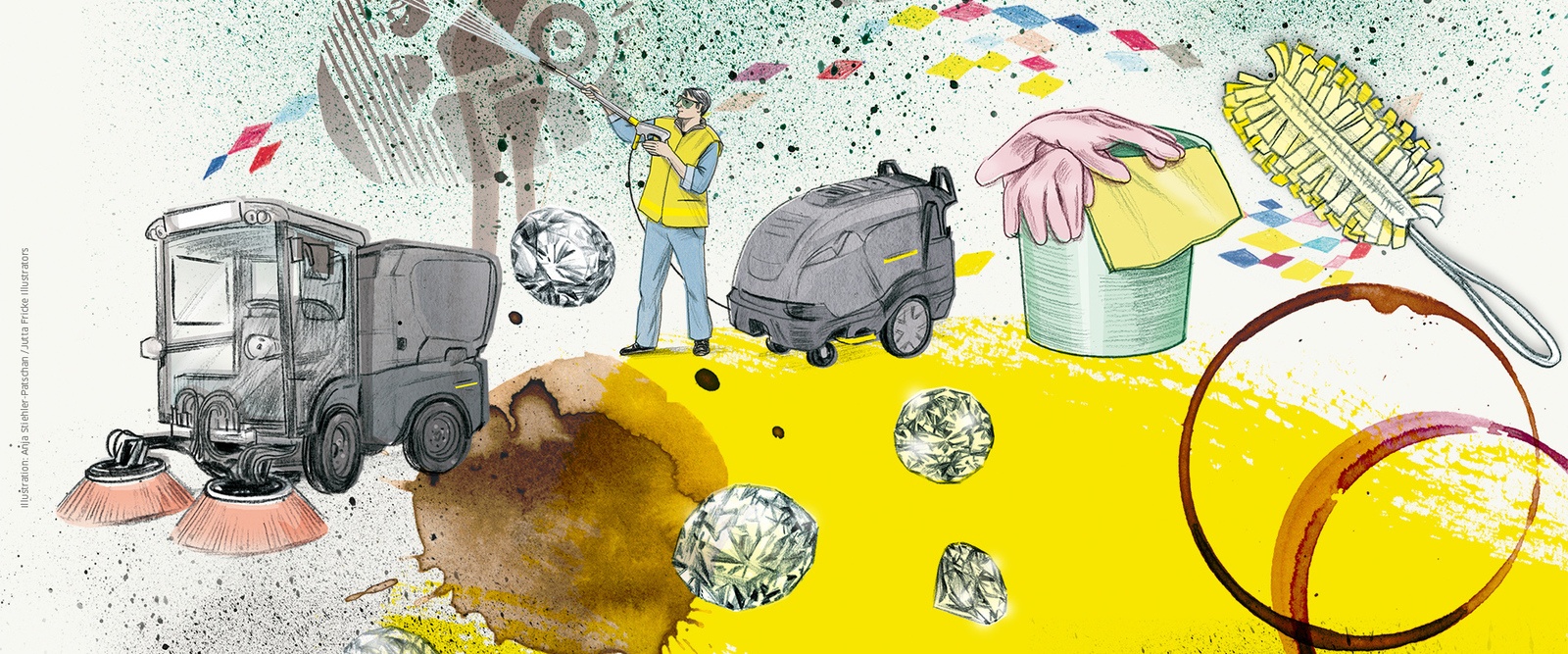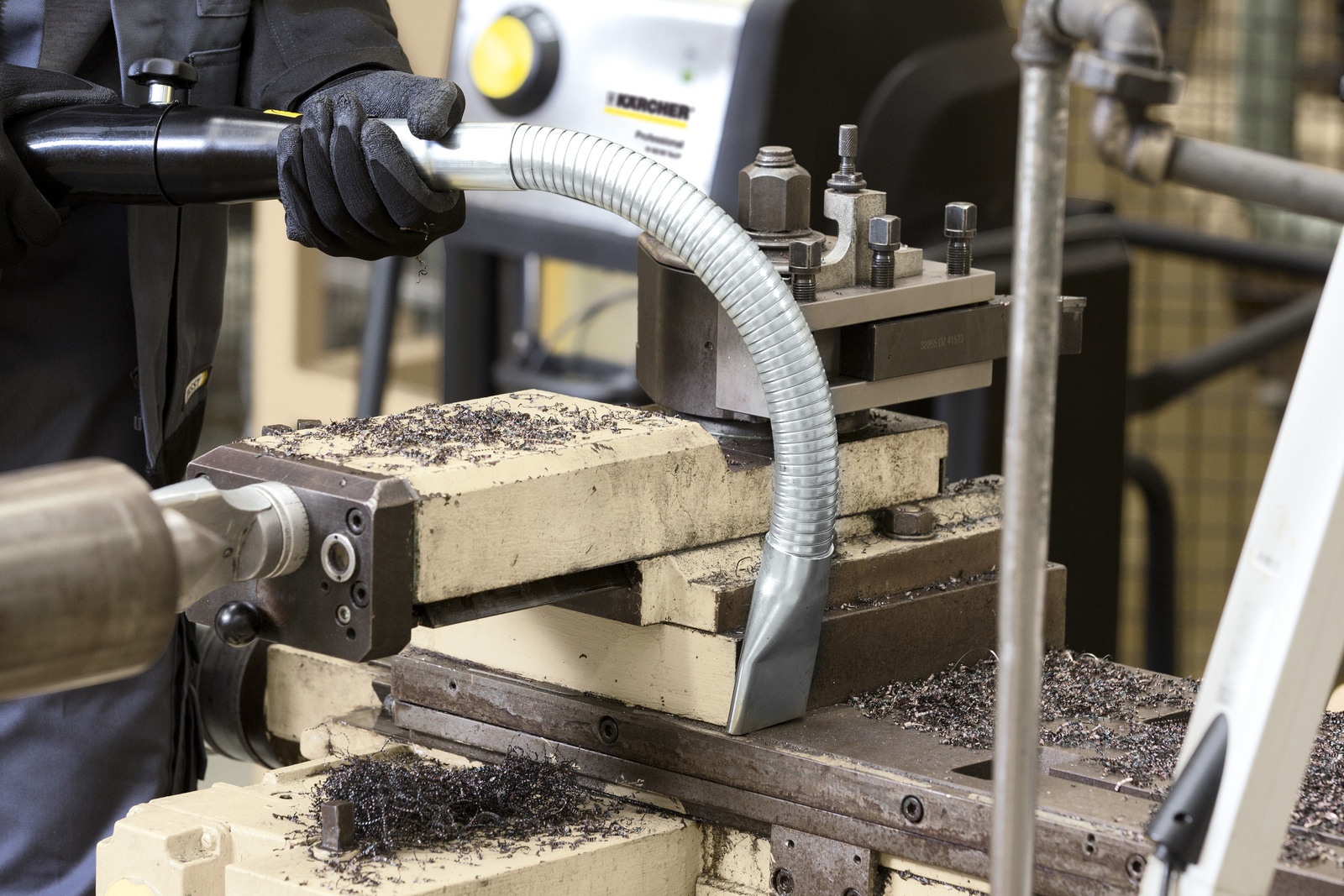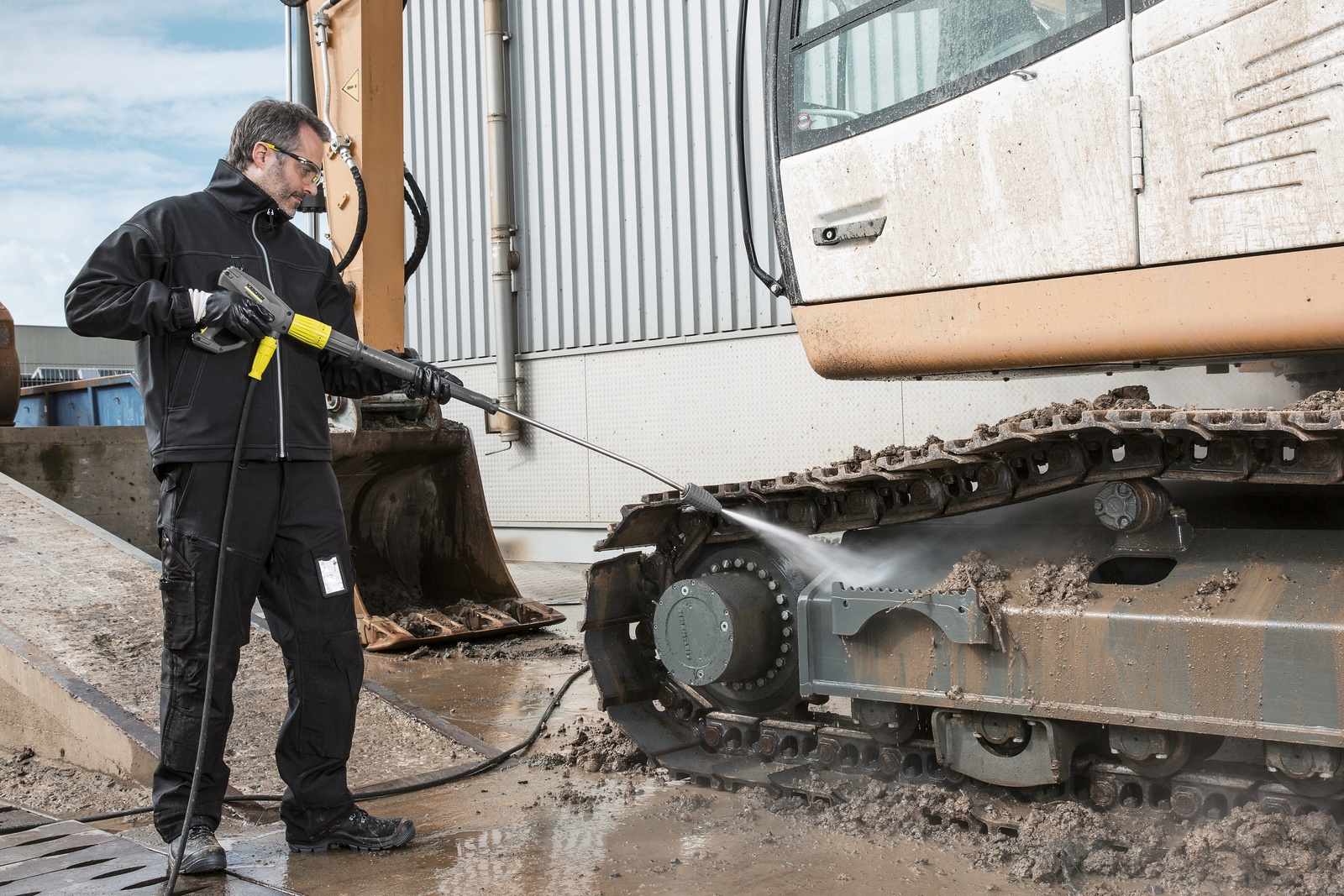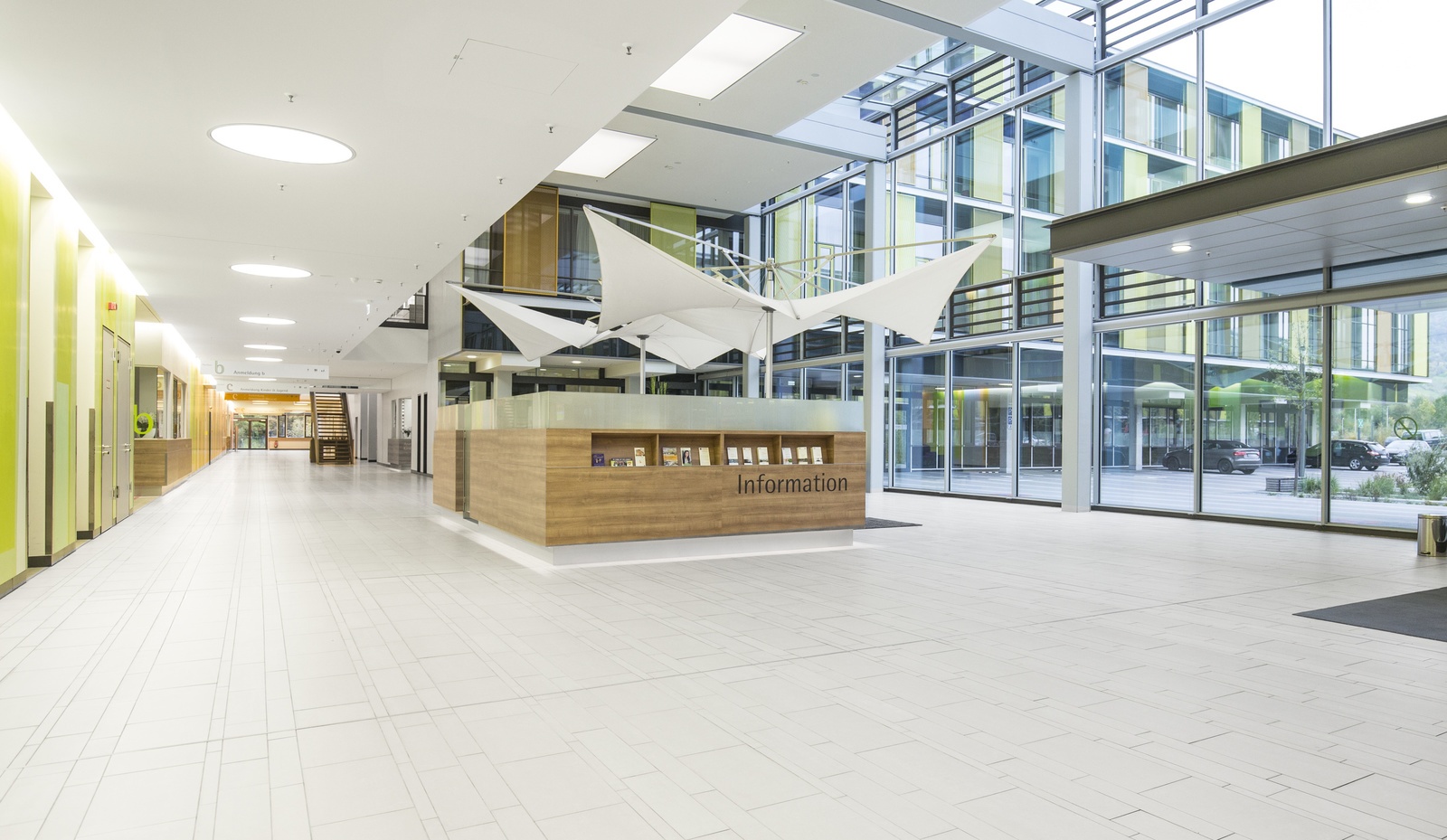FROM ULTRA-HIGH PRESSURE TO DRY ICE
Different challenges are in the foreground across all industries when it comes to cleaning. Cleaning methods and appliances vary accordingly. An overview.

What is dirt in the first place?
If you look into the question, which cleaning devices are needed, it is basically always the question of what is considered to be dirt and needs to be eliminated. In doing so, you meet up more or less inevitably with the anthropologist and cultural theoretician Mary Douglas. In her work “Purity and Danger” from the 1970s, she deduces that dirt is something that counts as being at the wrong place. Sand is therefore seen by most people as being inappropriate on a desk, whereas sand on a beach is something beautiful. This example shows that the perception of dirt has a lot to do with one’s own sense of order. The scientific understanding of dirt has developed over the decades even more, for the categorisation of dirt as something that is at the wrong place does not always work: A diamond in the waste bin will hardly be perceived as dirt. So factors like aesthetics or material value are added.
Modern cleaning technology is an essential component in dealing with dirt. If you think about applications in the home, the requirements are clearly defined: It is a question - depending on your own need for cleanliness - of a necessary elimination of dirt with best possible ergonomic and efficient appliances, from vacuum cleaner to high-pressure cleaner. Good technology facilitates house and garden work and thus contributes to a certain comfort factor. In the industrial sector, on the other hand, it takes on significantly more functions: If machines are consistently kept clean during production, this is an important aspect with regard to value retention and maintenance. In the medical sector, cleaning technology is an indispensable hygiene factor, where dirt becomes less and less perceivable, down to clean room conditions. The Fraunhofer Institute for Production Technology and Automation in Stuttgart runs the purest clean room in the world with an area of 250 square metres. A cubic metre of air there contains only one single, 0.1 micrometre sized particle – a truly clean environment.
Chemical Industry
Cleaning work is not part of the core business of the chemical industry, it is, however, the prerequisite for smooth and efficient processes. The product quality remains constant thanks to appropriate cleaning of the production facilities, which is a decisive factor for market success. It also applies to fulfilling internal operating specifications and complying with general standards.
The possibilities are varied, from Cleaning in Process systems (CIP) running during operation to mobile systems on site and dismantling and cleaning of parts at external washing stations. Also with regard to the chosen cleaning technology, there are different variants, whereby ultra high-pressure technology is the most efficient method in many cases.

Metal processing
Milling, drilling, turning, sawing, grinding, deburring or brushing: There are lots of work processes in the metal processing industry, where shavings, finest dust and depending on the processing, liquids such as cooling lubricants arise. In order to guarantee maximum product quality and work safety, it is important to select the appropriate extraction solution.
Solutions are becoming popular that work fully automatically along the entire shaving process chain. That means, the complete process of arising shavings, therefore the cutting process, up to the recycler, is covered. The higher investment in the technology quickly pays off, for improved productivity and process safety and reduced personnel costs are the result.
Construction machines
Cleaning construction machines serves the long-term value retention and also ensures a representative image. It is part of every maintenance process, guarantees perfect operation and increases the service life considerably.
In this way, machine damage with the corresponding work disruptions and repair costs can be avoided. Because of its versatility, high-pressure cleaning has proved its worth as a cleaning method: It can be used for underfloor, outer and motor washing as well as for cleaning the machine components.

Food industry
Production, storage and transport of food are subject to the strictest guidelines and standards. For companies to be able to comply with these specifications, they need reliable cleaning concepts among other things. Wet and dry vacuum cleaners, industrial vacuum cleaners, scrubber-dryers and sweepers, extraction systems, hot water steam and ultra high-pressure steam technology and dry ice cleaning are used. Efficiency and smooth integration in the production as well as the fulfilment of hygiene and work safety standards are among the factors for success.

Agriculture
The requirements in agriculture are varied. An indispensable component of professional livestock farming is assured quality due to highest hygiene standards. The regular thorough barn cleaning with high-pressure technology and foam disinfection is therefore a must, in order to protect the animals from pathogenic agents and vermin. Breeding tanks and vehicles and containers in fish farming can be protected against micro-organisms efficiently and environmentally-friendly with the combined high-pressure foam procedure.
High quality machines are used in arable farming or wine-growing, which you must be able to rely on for years. It is therefore essential to maintain the functionality permanently by regular care and cleaning with cold and hot water high-pressure equipment. Special barrel cleaners remove deposits from fermentation, ripening or years of storage in barrique barrels practically and quickly without elaborate rearrangements..
Healthcare
Successful clinical operation is inseparably linked with up-to-date hygiene and appropriate efficiency. For this, the core tasks of hygiene, above all the avoiding of infections and dissemination of germs have to be coordinated with care and value retention tasks as far as possible.
The different areas in hospitals require different solutions each time, from small to large areas, from kitchens to operating theatres. In addition, the continuous operation requires particularly efficient maintenance cleaning, because there are only seldom time windows open for elaborate thorough cleaning. Increasingly demanding hygienic standards, increasing cost pressure and competition are aggravating factors. Professional, efficient cleaning systems, coordinated to the respective requirement, are therefore vital.

City sanitation
Cities and municipalities usually have to keep an extensive network of streets and paths clean and do so as economically as possible. That includes wet cleaning as well as sweeping - communal machines therefore have to be used as versatilely as possible. In addition, weeding or looking after green areas should also be able to be carried out with equipment carriers for year-round use and corresponding accessories. When heading for winter service, four-wheel drive and traction control are necessary characteristics. Scrubber-dryers are genuine all-rounders that master every task with the right accessories from daily maintenance cleaning and removal of light contaminations to thorough cleaning of highly structured floors or polishing of sensitive surfaces.







